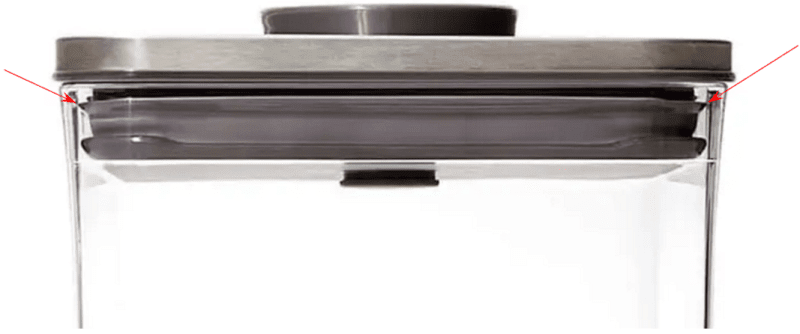Hi all,
So after giving a shot at the correct sub-forum, with only one quite abstract response, after more than 10 days I figured I'll try a more lively venue to ask.
I have a lab glass beaker (borosilicate 3.3; off-the-shelf product) lets call it the Container, which is intended to be used in a clinical drug delivery device (human clinical trials).
The container will hold a certain amount of an inert aqueous solution, at room temperature and atmospheric pressure at all times.
At certain points of time when the container is used it needs to be hermetically sealed, so that nothing can get into or out of the container, meaning that the sealing solution can be fitted in place and removed as necessary manually.
To seal the container I can only use a press-fit cap (similar to those generic food storage containers, as in the attached image).

I've tried to use regular O-rings (PTFE, Viton, Silicone) but each O-ring had it's issues sealing the container (in a nut shell the PTFE was to stiff and hard, Viton and Silicone on contact with glass just seize in place due to high friction).
I've tried to search for a V-ring or a U-ring that might work (even if it's not what it was originally designed to do), but didn't find anything specific.
The idea for the V-ring or U-ring came after observing the way those food container are sealed with the seal/gasket having one ore more "flanges"/"skirts" (marked with red arrows in the image).
The seal/gasket must be a bio-compatible with certification (otherwise we wont be able to perform the clinical trials).
I'll appreciate any ideas!
Thanks,
SD
So after giving a shot at the correct sub-forum, with only one quite abstract response, after more than 10 days I figured I'll try a more lively venue to ask.
I have a lab glass beaker (borosilicate 3.3; off-the-shelf product) lets call it the Container, which is intended to be used in a clinical drug delivery device (human clinical trials).
The container will hold a certain amount of an inert aqueous solution, at room temperature and atmospheric pressure at all times.
At certain points of time when the container is used it needs to be hermetically sealed, so that nothing can get into or out of the container, meaning that the sealing solution can be fitted in place and removed as necessary manually.
To seal the container I can only use a press-fit cap (similar to those generic food storage containers, as in the attached image).

I've tried to use regular O-rings (PTFE, Viton, Silicone) but each O-ring had it's issues sealing the container (in a nut shell the PTFE was to stiff and hard, Viton and Silicone on contact with glass just seize in place due to high friction).
I've tried to search for a V-ring or a U-ring that might work (even if it's not what it was originally designed to do), but didn't find anything specific.
The idea for the V-ring or U-ring came after observing the way those food container are sealed with the seal/gasket having one ore more "flanges"/"skirts" (marked with red arrows in the image).
The seal/gasket must be a bio-compatible with certification (otherwise we wont be able to perform the clinical trials).
I'll appreciate any ideas!
Thanks,
SD
